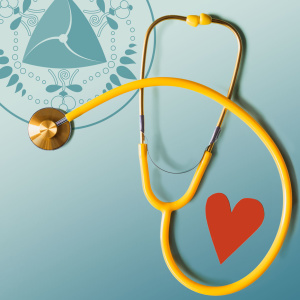Three Life Altering Strategies for Listening to Your Body
Morning is when I usually spend some time tuning into my body. I do some gentle yoga to warm up my joints and then I sit and scan my body. I am not looking for anything in particular, but rather checking in.
Have you found that symptoms or challenges seem to crop up out the blue? Soreness, rashes, indigestion and the like show up without any obvious reason. It seems like they came out of nowhere.
For example I have been waking up to cramping in my calves lately. It is not painful, just mildly uncomfortable, but it has my attention first thing in the morning. If fills the criteria of being noticeable and new.
I scanned my actions and food choices for the last few days. Could it be that I have been eating more meat than I normally do? Could it be the increase in my cardio exercise routine? Could it be that I switched brands of the Magnesium I usually take before bed?
So what would I do? I would tune-in. Like queuing up my favorite playlist and putting on my noise cancelling headphones, I would close off my senses to the outside world and take a deep dive within.
The purpose of tuning in is to develop clear lines of communication with my body and it is something I have found all my clients benefit from. Like any form of communication it takes both expression and reception to be effective. When the body presents certain symptoms it has something to tell you.
Does it sound a little narcissistic? Well, maybe it is, but I in the age of low self-worth and overconfidence hiding low self-esteem I am happy to employ a therapeutic dose of narcissism.
The process of tuning in, doesn’t have to take hours or even minutes. The gentle scan may provide some insight that is the key to your childhood trauma or some other deep seeded behavioral pattern, but more than likely the awareness and acknowledgment that you bring is all that is needed.
For me it is almost like talking to a child. I say “I hear you, what are you trying to tell me?” Too often we try and solve a problem before we truly listen. We jump to conclusion and prescriptions, when if we could take a moment we would get all the information we need. And sometimes the information tells us that we don’t need to do anything.
Step One
Often we feel like our bodies and minds are at odds with one another. Like they have different agendas. Tuning in allows us to be in harmony and in communication with our body and mind. When is the last time you paid deep attention to anything? Step one is about paying attention.
It is through your attention that you develop the skill of understanding what you are listening to, developing an awareness of what it means and create the care with which you can respond. If it sounds miraculous. That is because it is. This is what Ayurveda is built upon. Saints in deep meditation understanding the secrets of life. Deep awareness is the foundation of Ayurveda.
Step Two
Tuning in is different then hearing. When we hear something we can easily be somewhere else. Thinking about what we will say next or splitting our attention between multiple tasks. Listening requires perception. This is most often associated with they eyes. We perceive, we see clearly. When we truly perceive the picture in front of us it is no longer blurry, instead the crystal clear message of what the body is communicating arises.
This may not happen overnight. Often we have to keep coming back to something for a few days or a few hours in order for it to reveal itself. That is when we start to experiment.
On the second day of my calf cramping, I decreased my dose of magnesium, I made sure to stay hydrated and I reduced my intake of meat during the day. I knew that I needed to make a change, but I wasn’t quite sure which change was needed.
Thankfully my calf cramping is a simple electrolyte imbalance, but many symptoms that arise from the control center of the body (nervous system and endocrine system) can be more challenging.
Step Three
With these more complicated symptom profiles there is a simple strategy that can be used. I call it sketching my symptoms. Although I really enjoy drawing, I’m not very good at it, so it has nothing to do with drawing. What sketching your symptoms is all about is starting by writing down all of your symptoms. Everything and anything you can think of. What Ayurveda does is it creates a framework where seemingly separate symptoms are actually related. They have the same root.
By sketching your symptoms you can begin to look for a common root. It is finding the roots that is the ultimate goal of listening to your body. If you need help sketching your symptoms and finding your roots, then schedule an appointment with Rhythm of Healing.
Book A Session
-
 Ayurveda Session$250.00
Ayurveda Session$250.00




